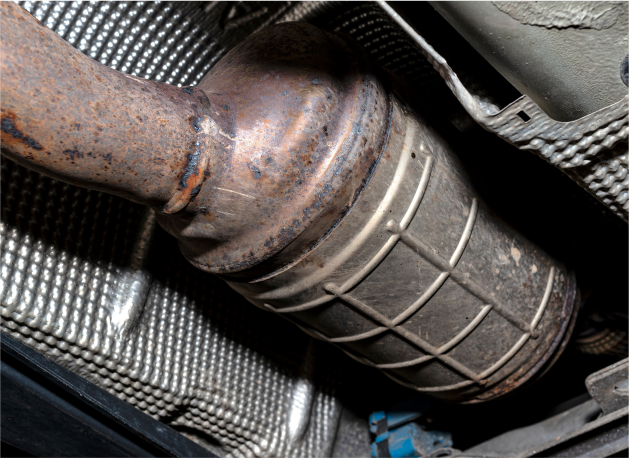
Understanding Diesel Particulate Filters (DPF)A diesel particulate filter (DPF) is designed to capture and store exhaust soot (also known as soot traps) to reduce emissions from diesel vehicles. Since DPFs have limited capacity, the trapped soot needs to be periodically emptied or ‘burned off’ through a regeneration process. This regeneration cleanly burns the excess soot, reducing harmful emissions and preventing the black smoke often seen from diesel vehicles, especially during acceleration.
Introduced with the Euro 5 exhaust emissions legislation in 2009, DPFs became mandatory to help lower car CO2 emissions. Since then, approximately half of the new cars each year have been diesel-powered.
No, removing a DPF is illegal and can result in fines. Additionally, it can invalidate your car insurance policy.
A clogged DPF or a system fault typically triggers an orange light on the dashboard. This symbol usually resembles a piped box with dots in the middle, although it may vary slightly by manufacturer. Consult your vehicle’s handbook for specific details.
Blocked DPFs are primarily caused by short journeys at low speeds. This is why manufacturers often recommend petrol cars for city driving. Poor servicing can also cause premature DPF failure. Regular maintenance is crucial, as a well-maintained DPF should last at least 100,000 kilometers. Using the correct oil is also important, as some oils contain additives that can block filters. Performance modifications, low-quality fuel, and frequently running the car on low fuel levels can also damage the DPF.
If your DPF warning light remains on, turns red, or additional DPF lights appear, seek professional assistance promptly. Ignoring these warnings can lead to more significant and costly damage.
Rapid Diesel Services specializes in servicing and restoring DPFs. We offer superior DPF cleaning using advanced ultrasonic and flash jet cleaners. Our service packages cater to all vehicles, including cars, trucks, buses, motorhomes, light commercial vehicles, mining machinery, and marine applications.
Proper maintenance ensures your DPF can regenerate itself when full of soot. There are two types of regeneration: passive and active.
Active Regeneration
Active regeneration involves automatic extra fuel injection when the filter reaches around 45% capacity. This raises the exhaust temperature to burn off the soot. Problems can arise if the journey is too short, preventing complete regeneration. If this happens, the warning light will stay on, indicating a partially blocked filter. To complete the regeneration cycle and clear the warning light, drive for about 10 minutes at speeds over 40 km/h.
Signs of Active Regeneration Include:
Change in engine note
Cooling fans running
Slight increase in fuel consumption
Increased idle speed
Passive Regeneration
Passive regeneration occurs during long, high-speed journeys, such as on motorways, where the exhaust temperature naturally rises to burn off excess soot. Regularly driving at sustained speeds for 30 to 50 minutes helps keep the filter clear.
However, not all drivers frequently engage in such driving. Hence, manufacturers have developed alternative regeneration methods to ensure DPF functionality.

Expert maintenance, repairs, and services delivered by our in-house team of Diesel Mechanics, Auto Electricians, Hose Doctors, and Boiler Makers.
Copyright © All Rights Reserved. Made with ❤ by Side8 | SEO by DMB Digital